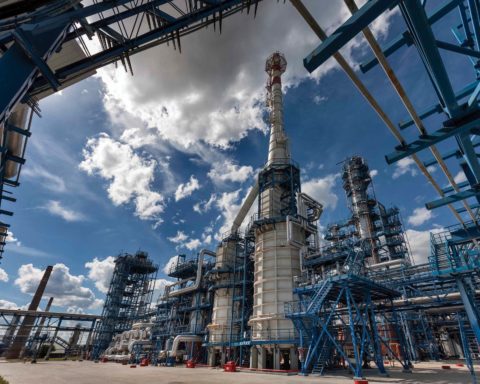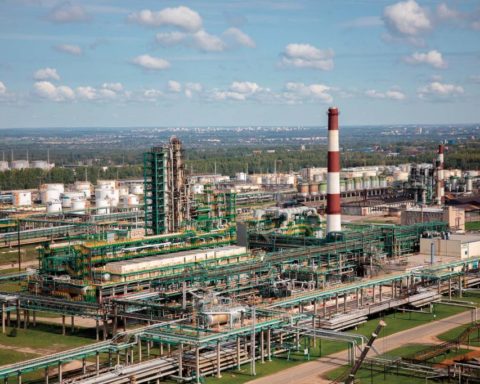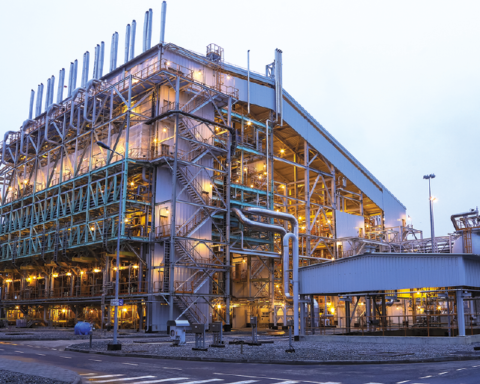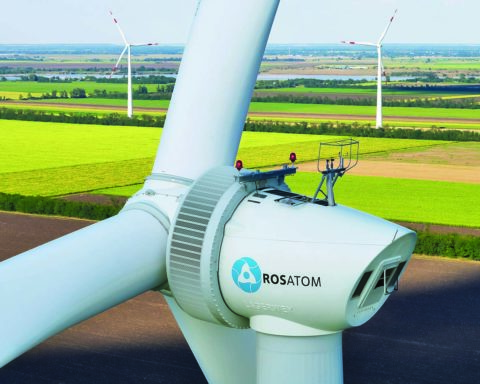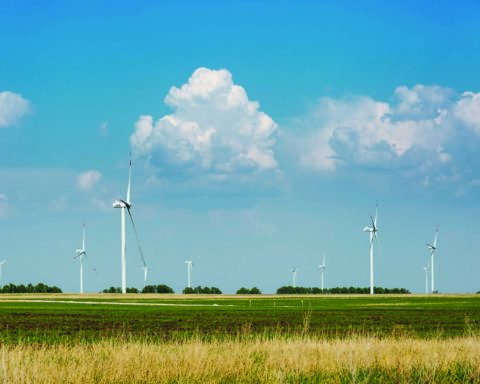Alena ZHURAVLEVA
“Energy Policy” Journal Columnist
The Northern Sea Route is the major transportation artery connecting Europe and Asia along the Russian Artic seashore, passing by the Arctic Ocean seas (the Kara Sea, the Laptev Sea, the East Siberian Sea and the Chukchee Sea). The route connects European and Far East ports of Russia and the Siberia navigable rivers, the length of the Northern Sea Route from the Kara Strait to the Providence Bay makes 5.6 thousand km, and from Saint Petersburg to Vladivostok it makes about 14 thousand km.
History of Development
The Northern Sea Route has a long history. From as early as thirteenth century the North seacoast was actively investigated by the Pomors making relatively small-length passes. The English and the Dutch mariners have taken the interest in the Arctic route searching for a short way to rich China. However at the beginning of the seventeenth century the Tsar Mikhail Fedorovich
prohibited to get from Arkhangelsk by sea to Mangazeya – the first Russian city beyond the Arctic Circle built by Boris Godunov’s order.
The significant contribution in development of territories made by Dezhnev and Bering expeditions, during which the considerable part of the Russia northern coasts was investigated, their map was drawn up, and the available strait between Asia and America was finally proven, as well as the route to Japan was discovered.
First time the whole route of the Northern Sea was passed in 1878–1879 by expedition of the Swedish investigator. Adolf Erik Nordenskiöld, which using “Vega” schooner has sailed from the Atlantic ocean to the Pacific ocean by going around the north-end of Eurasia – the Саре Chelyuskin. The expedition has proven real possibility of using the Northern Sea Route as the transit route and has survived the winter near the coasts of the Chukchi Peninsula.
As it is known the scientist Dmitry Mendeleyev have written more than twenty works on research of the Arctic, who noted that breaking through the Arctic ices requires ”assistance of the relative accessories and, mainly, the clear understanding of the forces, which prevented the ships into unknown polar regions before”. The scientist meant the icebreakers and ices destruction by means of explosions. In 1899, the first Arctic icebreaker Yermak was built in Newcastle (England) and it arrived into Russia.
The first Russian expedition that has passed the Northern Sea Route right through from the east to west was the geographical expedition headed by Boris Vilkitsky at the beginning of the twentieth century. This expedition have survived the winter near the Taymyr Peninsula.
An for the first time without wintering, the investigator Otto Schmidt have passed the route
in 1932 by Aleksandr Sibiryakov icebreaker steamer. Those were Schmidt expeditions that proved the fact that the Arctic can be actively developed. In particular, there was found Glavsevmorput (Northern Sea Route Authority) with its tasks of organizing the Northern Sea Route development and its technical equipment and performance of research operations, its subsurface resources and the region on the whole. The organization was in charge of seas and islands of the Arctic Ocean и continental territories of the country Asian part to the north of the 62-nd parallel (on which Yakutsk is located).
The Soviet Union used the drifting ice stations for developing the Arctic and due to which the Soviet scientists were the only ones in the world, who had the opportunity for studying region all-the-year-round. To the beginning of the Great Patriotic War the USSR had 18 polar stations and the most notable of which were “Amderma”, “Bely nos” and “Yugorsky shar”. Those were the integrated research bases having no military value, which collected geophysical data for transport operations in the Northern Sea Route and carried on the research operations. In addition, by the beginning of the war, there was adequately developed polar aviation and the powerful icebreakers were built.
In 1934, the Litke ice-cutter have passed the Northern Sea Route from Vladivostok to Murmansk for one season, and next year four general cargo motorships have passed
the same route during summer. Then the warships of the Baltic fleet have passed to the Far East.
At the same time, the active geological survey of the Extreme North has started, which led to discovery of coal, tin and gold reserves. Simultaneously the oil and gas were prospected.
During the war years the role of the Northern Sea Route has grown significantly: it was used as the way for passing the Navy Pacific Fleet combat ships in the Barents Sea, for lend-lease escort (though to the lot of the Northern Sea Route fell 3 % for the total lend-lease deliveries), as well as for economical transportations of the stone coal, nickel, copper, forest, including those for the war needs, through Dikson, Dudinka, Naryan-Mar, Tiksi and Igarka.
According to different data, during the war years, there was transported from 4 mln to 17 mln tons of different goods via the Northern Sea Route, at that, the battles have taken place here as well. The shipments have been performed, including the mined waters, where shipping traffic was prevented by the German submarines. In 1943, in the Kara Sea there were much more submarines than in the Black Sea and the Baltic Sea. In 1942–1943, the most fierce battles were in the Northern Sea Route region, and in 1944 the volume of shipments by this route has grown significantly and we could say about full navigation volumes. In 1945, navigation was performed already in peaceful conditions, when the vessels “Kuban”, “Vladivostok”, “Askold” and “Pskov” have come from the east with the import goods from the USA.
The peak for development of the Arctic came in the Soviet period. In the post-war period the nuclear fleet has started to be used here. In 60s the geologists started to discover large oil&gas fields in the Soviet Arctic, and development of the Norilsk Mining and Smelting Works requiring the-year-round navigation from Murmansk to Dudinka (is capability was proven at the end of 70s) had a huge impact. Since 1948, the river vessels from the RSFSR (Russian Soviet Federative Socialist Republic) European part started to pass systematically by the Northern Sea Route to the Siberia rivers, then the fishing vessels – to the Far East. Nuclear Icebreaking Fleet has appeared in the USSR: in 1959, the first nuclear icebreaker “Lenin” was built, from 1974 – the family of icebreakers “Arctic”. It should be understood, that the fuel reserve for diesel icebreakers was enough for a month, which caused trouble to the north navigation. Emergence of the nuclear icebreakers allowed for escorting the convoys of vessels during all navigation period.
In 1977, the icebreaker “Arktika” has become the first surface vessel that has reached the Arctic Circle. Thus, the Northern Sea Route has been gradually changed from the extreme route to a reasonably commonplace route providing the vital functioning of the Extreme North and the Far East supplying them with fuel, food products and the goods of first priority allowing for exporting the region fossil minerals. The 80s have become the record-breaking by the volumes of shipments by the Northern Sea Route: in 1987, the cargo turnover here has reached 6.6 mln t.. However, the project of the Soviet Arctic integrated development elaborated at the end of the USSR existence has never been implemented, and with breakup of the USSR the cargo turnover
by the Northern Sea Route dropped down to 2 mln t, due to Nornikel mainly. The goods delivery system to the north was destroyed and the Northern Sea Route infrastructure has faced severe problems due to lack of funding: this was the case both for the icebreakers and the fleet on the whole, and the ports and the polar stations. In practice, the ports were left with no work, as well as many northern settlements.
For international shipping traffic, the Northern Sea Route was opened only in 1991:at the end of 80s Mikhail Gorbachev has come forward with such initiative, and, as a result, in 1990 the rules of navigation on the route opening the route access for foreigners and establishing the authorization-based procedure for shipping traffic through it under control of local navigation services. They have come into effect in June 1991 and remained in force till 2013. The foreign vessels for passing had to comply to EMS (environmental management system) requirements, the Igarka port was open for them, as for the other some dozens of port, the decisions on them were taken every year. However, the commercial transit of foreign vessels was not performed – only one such vessel “Astrolabia” flying the flag of France has passed by the route.
In 1998, the Russian and the Finnish tankers with the gas condensate have passed from Yamal to Europe as an experiment with the escort of the icebreakers. Thus, possibility for the-year-round transit in this part of transit has been proven again. At that time, few tourist cruises have been started in the Russian icebreakers. In those years, the UN considered that more than 7 mln t of transit cargoes could be shipped by the route. However, according to calculations of that time, this route could become profitable with the volumes reaching 24 mln t. Meanwhile, by 2000 the cargo turnover by the Northern Sea Route made 1.6 mln t only.
In 1993–1998, within the framework of International Northern Sea Route Program (INSROP), which was implemented and funded by Norway Japan and Russia, in summer 1995, the pilot commercial voyage of the Russian vessel “Kandalaksha” from Japanese Yokohama to Norwegian Kirkenes took place. Confirmation of that fact, that during summer navigation the foreign shipper may gain 15 days, when using the Northern Sea Route instead of the Suez Canal, and economy in each voyage will make 500 thousand dollars were its results. At that, the Russian party will receive about 100 thousand dollars for each conducted foreign vessel.
The North Second Wind
In the beginning of two thousands, the project on transportation of hydrocarbons from the Arctic was implemented with participation of 21 country from the European Union, and the Japanese organizations conducted the second phase of the Northern Sea Route research as continuation of INSROP on studying the region eastern part (JANROP Phase II).
In 2008, Russia adopted “Basic Principles of State Policy of the Russian Federation in the Arctic for the period up to 2020 and for the future ahead”, the use of the Northern Sea Route as an integrated transport communication of the Russian Federation was named the national interest and strategic priority of the state policy – its attraction for international navigation.
As a result, in 18 years after “opening” of the Northern Sea Route in summer 2009, the sailing of the first two commercial vessels on the route took place: the vessels of the German company Beluga Group have passed from South Korea to the Siberian Novy Port and then to Amsterdam. They have passed the part of the way due to the Russian icebreakers. Next year the company has performed passing of two vessels again. On the whole, in 2010, three foreign vessels have passed by the route with escorting of the icebreakers and, according to different assessments, the international transit has grown up to 115 thousand tons.
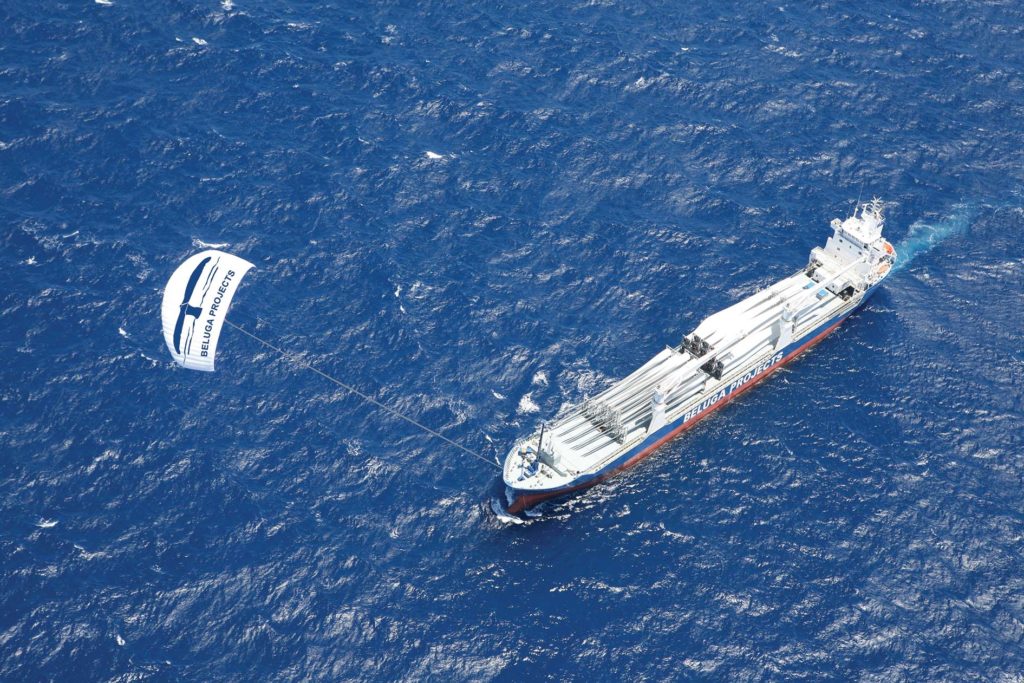
Link: forums.airbase.ru
After two years, in 2011, more than three dozens of vessels have passed by the route, which have shipped, about 820 thousand tons of cargoes. The total cargo shipping made above 3 mln tons. The Norwegian Partner Shipping and the Danish Torm and Nordic Bulk Carriers have taken interest in this route. The last-named company have conducted its bulk carrier by the main pathway from Norway to China reducing the trip time by 17 days, which is by 45 % less as compared to the way via the Suez Canal. The fuel economy has made 180 thousand dollars. In 2012, the route has been passed by already 46 vessels from eight countries, at that, 25 of them – from west to east, including the ones with LNG from Norway to Japan (it is the first shipping of LNG by the Northern Sea Route) with coal from Canada to Hamburg In total, the transit has reached about 1.3 mln t and the cargo shipping on the whole – 3.8 mln t.
Russia has adopted the law on the Northern Sea Route, in which the concepts “icebreaking and ice channeling of vessels” appeared, the water borders have been defined. According to the subsequent rules, the administration issuing permits based on the vessel shipowner’s or captain’s electronic application shall engaged in organization of the vessels sailing. At that, the vessels could pass by the route under pilot (icebreaker) assistance obligatorily. In some cases, passing is possible without such assistance. The vessels have to abide with requirements on pollution protection and shall be insured. The administration also conducts monitoring and provides the data on hydrometeorological, icing and navigation circumstances on the Northern Sea Route assists in conducting search and rescue operations.
As a result, in 2013, the authorities have satisfied 635 applications for passing by the route out of 656 arrived, at that, 127 foreign vessels have received the permits. In 2014, 631 permits were issued, including 111 to the vessels flying the foreign flags, in 2015 – 715 permit for sailing (to 126 foreign vessels).
In 2016 the volume of cargo shipments by the Northern Sea Route exceeded the Soviet records for the first time and made 7.26 mln t. at that, the indicator is growing permanently, starting from 1996, but at the fastest pace – in the last decade. If in 2017 it made 9.9 mln t, in 2020 it will be – about 33 mln t.
Right for Ice and Sea
Under the Northern Sea Route interprets the water adjacent to the RF northern coast and covering the internal sea waters, the territorial waters, the adjacent area and the RF exclusive economic zone. From the east it is limited by the line of demarcation of the marine spaces with the USA and in parallel with the Cape Dezhnev in the Bering Strait, from the west – by the Cape Zhelaniya circle of longitude to the Novaya Zemlya archipelago, the eastern coastline of the Novaya Zemlya archipelago and western borders of the Matochkin Strait, the Kara Strait, and the Yugorski Shar. Thus, its length makes 6.5 thu km.
The rules of navigation in waters the Northern Sea Route waters are approved by the Russian Government. Meanwhile, not the legal, but sooner the scientific approach under the Northern Sea Route waters implies all navigation routes in the Arctic Ocean from the RF border and Norway in the Barents Sea withe Bering Strait.
There are disagreements between Russia and the USA on the order of navigation and determining shipping traffic by the route and the legal status of some straits. According to the UN Convention on the Law of the Sea of 1982, the vessels of all countries have the right for free navigation within the limits of exclusive economic zone of the coastal state (200 nautical miles from the coastline less 12 nautical line of the territorial waters and 12 miles of the adjacent area). However, Article 234 of this Convention allows the coastal state to introduce the non-discriminatory rules for regulating the shipping traffic in the exclusive economic zone for the environment protection in the extreme climate conditions and complicated ice conditions. it is worth noting that the USA have not become the participants of Convention on the Law of the Sea of 1982.
in its turn, Russia considers the Northern Sea Route passing through the marine areas with different regimes, as a comprehensive traffic route with the unified law regime for its passing. РФ refers to obligation of the coastal state to ensure environmental safety of the marine areas, for which the Convention allows for introducing the rules for regulating shipping traffic (of which, to the point, Canada has also taken advantage). Now the shipowner must submit an application to the Northern Sea Route administration minimum 15 days prior entering the waters,72 hours prior to inform on approaching to its borders and inform about the vessel movement, on its condition and the time of crossing the waters borders daily.
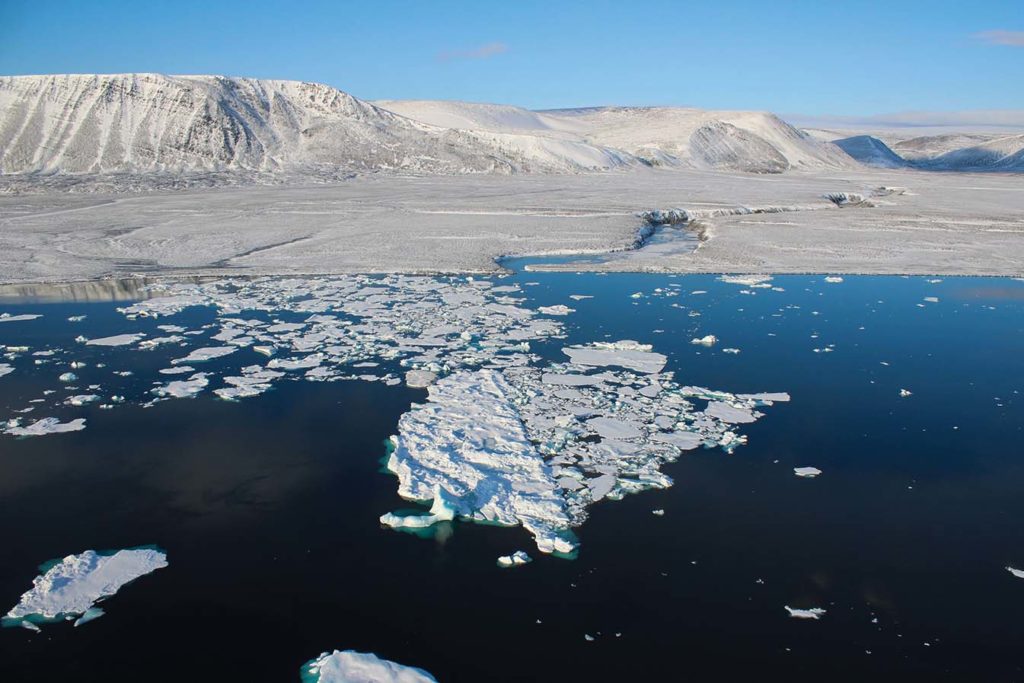
Link: sdelanounas.ru
The USA argue against the regulatory approval system of the shipping traffic by the Northern Sea Route and consider that this Article only relates to marine-pollution control by the vessels, but it does not allow for introducing notifying or permitting; regime for passing by the route. In addition, the USA is against prohibition of the foreign icebreakers and obligatory use of icebreaking and pilot assistance, as well as the regime application to the vessels being at the state service (i.e to the military ones). The necessity for making payment for passing the route and escorting are criticized. In addition, the USA consider the part of the Russian Arctic straits (Vilkitsky, Shokalsky, Sannikov and Laptev) not the internal, as Russia does, but the international ones. Nevertheless,
The RF also states the payment is necessary for supporting the route infrastructure in the proper condition. In Russia, the Northern Sea Route is considered formed national transport artery historically specifying the right for first discovery and development of many Arctic territories by the USSR.
In addition, there is one more potential problem related to the с global climate warming. Decrease of ice cover challenges the wording of the UN Convention requiring availability of ice covering the regions for the most part of the year, for control of the coastal countries over the shipping traffic. Russia proceeds from the premise that during Convention development the experts could not but consider such dynamic changes of the global climate, and the concept territories cover with ice was considered as the synonym of the Arctic Ocean.
Route for Future
In 2018, Rosatom has become the Northern Sea Route infrastructure operator. The same year, the RF President Vladimir Putin stated on the necessity for increase of the cargo traffic by the Northern Sea Route up to 80 mln tons by 2024 from the current 20 mln tons. Earlier, it was assumed to reach such level by 2035. During 2020, the cargo turnover made almost 33 mln t – mainly it is oil, LNG and Nornikel metals. It means 5 % growth in the annual comparison.
In 2018, the integrated plan for modernization and expansion of infrastructure by 2024 was included in the project for the Northern Sea Route development, the expected funding will make 580 bln rbl.
The oil, the liquefied natural gas, the oil products, metals and the ore, as well as the container shipments must ensure the cargo traffic. “By the last year results, 22 million accounted for Yamal LNG project cargoes and the constructed Arctic LNG-2 project”, – said Leonid Mikhelson, the Head of NOVATEK. LNG provides about 65 % of the Northern Sea Route loading.
Last year Aleksandr Kozlov, being the Minister for the Far East and the Arctic Development then, noted that the NOVATEK and Rosneft projects will become the main sources of loading.
Gas Route
According to the strategy of the Arctic development elaborated by the Ministry for Development of Russian Far East, of which the Vedomosti informed, by2035 LNG can provide up to 80 % loading of the Northern Sea Route. According to this document, by 2030 the LNG shipments can grow up to 120 mln tons from 80 mln tons in 2024 and up to 160 mln tons by 2035.. NOVATEK itself stated about 70 mln tons by 2030.
NOVATEK will provide deliveries of 35.5 mln tons by 2024, – said A, Kozlov. The main share will fall on Yamal LNG project (20 mln tons), 14.7 mln tons – on Arctic LNG-2», 0.8 mln tons – on Obsk LNG. As far back as two years ago, the company said that it will be able to deliver almost 47 mln tons, if the federal infrastructure is ready in due time.
One project on gas liquefaction – Yamal LNG – operates now in the Arctic based on South-Tambey field, on the Yamal peninsula. Project shareholders – NOVATEK (50.1 %), French Total (20 %), Chinese CNPC (20 %) and Silk Road Fund (9.9 %). The plant three main lines producing about 19 mln tons of LNG per annum work at the moment. The company finishes the startup and commissioning operations in the fourth line and promises to start it up at the earliest possible time. Its project capacity can make 0.9–0.95 mln tons with possibility for increase up to 1.6 mln tons. The start-up of this line, which, as opposed to the previous ones, was built by the Russian technology and using the Russian, was shifted more than once. At first, it should have started up at the end of 2019.
About 70 % of this project gas is going into Europe at the moment. However, the company reduces its delivery into this part of the world gradually forwarding the streams to Asia. Last year, it was sent 17.7 bln cubic meters to Europe and – 6.8 bln to Asia, at that, the number of LNG batches delivered to Asis increased twofold up to 34 bln cubic meters.
In July, NOVATEK delivered the first LNG batch from Yamal LNG project to Japan by the eastern route of the Northern Sea Route in the Arc 7 Ice class gas carrier.
NOVATEK also implements the second LNG-project Arctic LNG-2 in Yamal. The company owns 60 % of shares, Chinese CNOOC and CNPC, French Total and Japanese consortium Mitsui and Jogmec by 10 %. It is assumed to build three LNG-lines on the base of Utrenneye field on the Gydan peninsula, each line capacity shall make 6.6 mln t. It is planned to start-up the first line in 2023, the second one – in 2024 and the third line in 2026. In 2020, the company signed the first long-term and medium-term contracts for LNG supply from Arctic LNG-2 with Asian and European purchasers, and later it informed about the contracts with China and discussion of supplies with India.
NOVATEK also plans one more medium-tonnage LNG-plant – the Obsky. It was expected to build it in to phases by 2.5 mln t each in 2023 and 2024, but at the moment taking decision has been laid aside. Nevertheless, the plant capacity may be increased by a quarter, which the company said in February. The Verkhneteuteiskoye and Zapadno-Seiakhinskoye field will become the resource base for it.
This plant shall be built by the Russian technology already, which will be applied and on the Yamal LNG fourth line.
In addition, after two years the company may take the decision on investment on its fourth LNG-project Arctic LNG-1 with its capacity making 20 mln tons of LNG per annum.
For Yamal LNG, the company has 15 Arc 7 Ice class vessels. For Arctic LNG-2 project 21 tankers are planned – the contracts on building 15 vessels at the shipbuilding complex Zvezda and 6 more at the South Korean shipbuilding yard DSME were concluded. At that, about 80 % of gas from this project the company intends to send to Asia exactly,- declared NOVATEK. It is assumed that all tankers will the RF flag with Russian crews.
Oil Artery
Rosneft project on development of the province on Taimyr named Vostok Oil,which can provide up to 30 mln t of cargoes in the coming years, is the second constituent of the Northern Sea Route loading The project includes the Vankor cluster (15 fields, with the largest – Suzunskoe, Tagulskoe, Lodochnoe and Vankor fields), Zapadno-Irkinsky area, Paiyakhskaya group of fields and the field of Vostochno-Taimur cluster, and it is assumed to build the wide-scale infrastructure in the Arctic from greenfield practically. Rosneft announced the resource base of liquid hydrocarbons – about 6 bln tons.

Link: NOVATEK
The project has not been implemented yet – the company has started drilling in one of the key fields, Zapadno-Irkinsky area only a year ago. By 2024 Rosneft plans to build a special port for the project – in the Sever Gay on Taimy, its initial capacity will make 25 mln tons, and then it will grow up to 50 mln tons and, as the company expects, up to 115 mln tons in 10 years already.
As this year Maria Pirozhkova, the Chief Specialist of Analytics Center of the Russian Energy Agency of the Ministry of Energy of Russia, informed, the company is going to start-up two LNG-projects Taimyr LNG and Kara LNG in 2030-2035. The Taimyr LNG capacity shall make from 35 to 50 mln tons and it will be located in Sever Bay of Krasnoyarsk Territory.
Capacity of Kara-LNG project shall reach 30 mln t. Its start-up is planned for 2030–2035. In 2027–2028, the company will also be apple to start up Far East LNG projectwith capacity 6.2 mln tons and potential possibility for expansion by 10 mln tons.
Igor Sechin, Rosneft Head, declared that the Vostok Oil project first phase will ensure transportation of up to 50 million tons of oil per annum, the second phase – up to 100 million tons. Within the framework of grand plans, the company plans to build 50 different vessels. It has already ordered 10 Ice Class tankers with 120 thu t deadweight capable of working on the Northern Sea Route.
In addition, Gazprom neft develops Novoportovskoe field on Yamal with the oil production almost 6.7 mln tons per annum. By 2024, the maximal volume of production of 8 mln tons is expected in this field.
Way for Coal and Metal
The authorities also count on the metal-makers, in particular, Nornikel project development of such fields as Oktyabrskoe, Talnakhskoe, Norilsk 1, which will give 1.7 mln t of ore per annum. Syra-Dasaiskoe field of coking coal on Taimyr of AEON corporation shall provide 3.8 mln t of coal in 2024. The “deliveries to the Northern Territories” and transits of cargoes can ensure comparatively small volumes of 2.3 mln t.
Meanwhile, the authorities admit practically officially that the objectives on loading will not reach 80 mln t by 2024, considering 60 mln t volume to be more real. Yury Trutnev, the Vice Prime Minister, in charge of Far East stated of loading complications yet in summer. According to him, the adjustment is connected with shifting NOVATEK plans concerning Obsky LNG for two years from the initially planned deadlines, i.e.from 2022 to 2024, as well as the plans on Syra-Dasaiskoe field. By 2024, within the framework of the project on Taimyr Vostokugol’ planned to transport up to 20 mln t of coal by the Northern Sea Route. But the plans on coal production and transportation were adjusted after the suicide of the company owner Dmitry Bosov. Now, in 2023, the project can produce only 1 mln t, – wrote RBC.
Inevitable Adjustments
According to RBC data the volumes of cargoes delivery by the Northern Sea Route Vostok Oil company. By 2024, it will deliver only 9.25 mln t of oil, and, in 2025, it will increase the deliveries up to 25 mln t by the Northern Sea Route. Rosneft, nevertheless, confirms that its plans on the project did not change.
In presentation of Vladimir Arutyunyan, the Atomflot Headquarters Commander of Naval Operations it was said that, that, by results of 2022, the RF forecasts the cargo traffic of 37 mln tons by the Northern Sea Route, and in 2030, according to different forecasts, it will make from 110 to 130 mln t.
The options of the Northern Sea Route loading with the Russian wheat and frozen fish are also possible. Now the fish is already delivered by this route, including container carriers, but in small volumes.
Leaders in Ices
Development of all these projects along the Northern Sea Route is impossible without the related infrastructure and the large-scale nuclear fleet.
According to PWC data, the shipping traffic by the Northern Sea Route is mainly performed by the LNG-tankers Yamalmax of Ice Class Arc7, and the transit shipments are predominantly carried out by the vessels of Ice Class Arc4, which may need the ice channeling even in the summer-autumn navigation. During heavy ice the icebreakers are obligatory.
Global warming and development of technologies influence the terms of navigation, as a rule, shipping traffic in the eastern sector of the Arctic starts in July and lasts up to November. However, by the last year results, they have actually made 9 months.
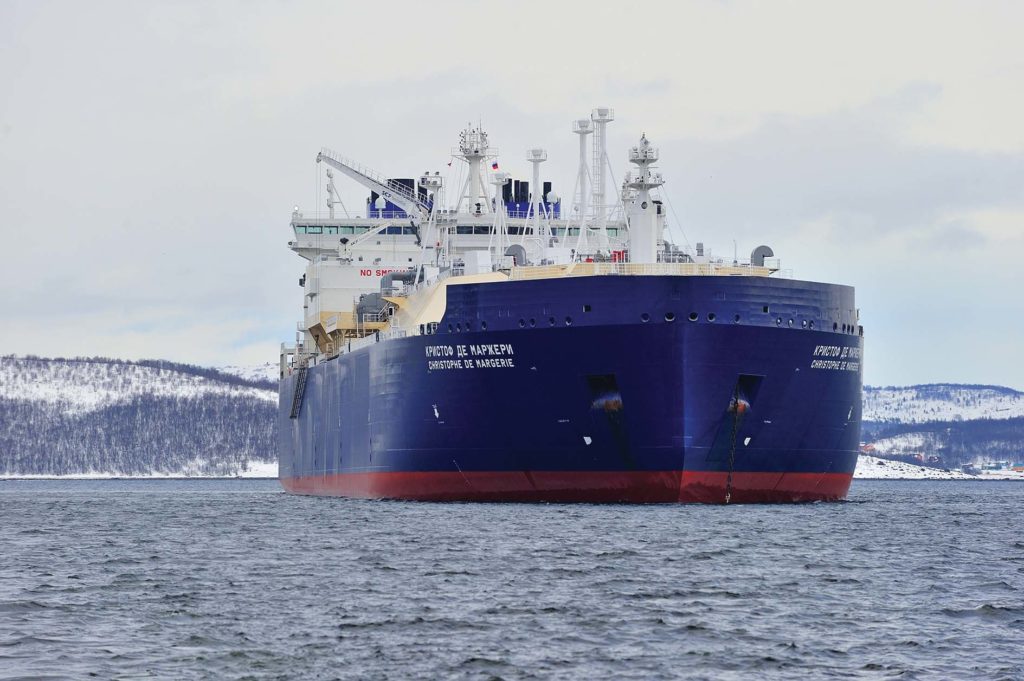
Link: arctic-lio.com
Thus, in May 2020, the first in the world Arctic icebreaking gas carrier for LNG “Kristof de Margeri” for LNG batch for China, for the first time in history have passed by the east of the Northern Sea Route with channeling of two nuclear icebreakers in May – by two months earlier the term. Duration of travel from Sabetta port to the Cape Dezhnev made 12 days.
This year the tanker passed by the route eastwards in January, at that, passing was carried out for 11 days independently and without escort of icebreakers. As it is expected, all-the-year-round navigation by the Northern Sea Route will become possible already after three years in 2024.
Russia is the only country in the world with the Civil Nuclear Fleet: at present, it has two nuclear icebreakers Yamal and 50 Let Pobedy, two atomic-powered vessels Taimyr and Vaigach, atomic lighter aboard ship – container carrier Sevmorput’ and the service ships. In addition, last year, the nuclear icebreaker Arktika, the first from 22220. series joined the fleet.
Besides Arktika, four more icebreakers will join the series: Sibir’ is expected for commissioning in autumn 2021, Ural – in 2022, Yakutia – in 2024, Chukotka – in 2026. After three-four years, Rosatom can contract building of two more multiple-purpose nuclear icebreakers of 22220 project. Thus, with account of Arktika, the number of this project icebreakers can reach seven units. The project 22220 vessels are multi-purpose, because they can be used both in deep waters and in the mouths of polar rivers..
Meanwhile, goal for ensuring all-the-year-round navigation in all length of the Northern Sea Route lie with project 10510 “Lider”. Last year, building of the project “Rossija” lead vessel was started. It should be put into operation in 2027.
By 2032, it is assumed to build two more such icebreaker with 120 MW capacity. “Lider” can overpass the ices up to 4 meters thick and form a channel up to 50 meters wide for vessels passing. Thus, as PWC notes, one icebreaker will be able to conduct the container carriers with the tonnage 14 thousand TEU,while the operating icebreakers are able to provide icebreaking channeling of container carriers with the tonnage up to 4 thousand TEU.
Transit: advantages and disadvantages
Meanwhile, this predominantly refers to loading the Northern Sea Route on account of domestic projects, despite the fact that one of the main objective of the Russian authorities was to change route to global and competitive transit artery. In 2020, 40 transit voyages including 34 for vessels flying the foreign flags passed by the Northern Sea Route, 1,2 mln t of transit cargos was shipped. Transit is mainly carried out from east to west and the average duration of such voyages did not exceed 8 days significantly. If the cargo traffic by the Northern Sea Route made about 33 mln t of cargoes, above 1.2 bln tons cargoes and more than 18.8 thu vessels have passed via the Suez Canal. Nevertheless, situation can change slightly after the incident with the jam in the Suez Canal, when the largest in the world container carrier Ever Given has stuck in the middle of the channel. It could not be moved out of its location for a week. As a result, the channel was blocked from its two sides with more of 450 vessels. Many of them had to go around the Cape of Good Hope.
The Northern Sea Route main advantage lies in the fact that it is shorter as compared to southern route via the Suez Canal. From Shanghai to Rotterdam via the northern route is a bit more than 8 thousand nautical miles as compared to 10.5 thousand miles via the Suez Canal, from Yokohama to Rotterdam – 7.2 thousand nautical miles as compared to 11.2 thousand miles the Suez Canal. At the average, the case is in economy of approximately 10 days of path.
In addition, there are no cues of vessels here, no problems with the pirates. When using the Suez Canal, the freight carriers have to incur expenses for insurance and safeguarding against attacks. In addition, speaking about the Northern Sea Route advantages, it is usually mentioned also about limitation of the Suez Canal by the size of Suezmax vessels.
However, the problem is that the path reduction does not lead to proportionate decrease in the shippers’ expenses. The Northern Sea Route has neither the pirates nor the required infrastructure as well. At the same time, there hard climatic conditions, absolutely unpredictable weather, which requires expensive insurance, as a minimum.
Passing through the Northern Sea Route in ices is limited in time – all-the-year-round navigation until it starts, passing by the route requires escort of the icebreakers. But even in the season of a low ice circumstances for the route, the strengthened ships created for movement in ices are required. It requires payment as well and escorting makes the ships to reduce their speed, which means increase of time travel duration. According to experts, they may cost twice as much as the ocean-going ships – above 200 million dollars. If there no heavy ices and the icebreaker may not be in need, all the same, probability of icebergs persists. In addition, only the vessels of certain size may follow the icebreakers: Arktika, for example, is 34 meters wide, so that means the vessels of Panamax Class, which can transport a bit more than 5 thousand containers. The Southern Route However between Europe Asia the large vessels 60 meters wide are used, which transport more than 20 thousand containers.
Taking into consideration that the Suez Canal is used by the shippers for one and a half century, the infrastructure is well developed here and the logistic chains are tuned up, which is not the case with the Northern Sea Route, where the transit must be created from scratch. This route was mainly used for internal needs, and passing of foreign ships is rather the exception than the rule.
For development of normal transit traffic, the shipping traffic shall be regular. All around the world, the container shipments, which could be performed on the Northern Sea Route, operate on “just-in-time principle”, i.e. according to the strict schedule published beforehand. With the Northern Sea Route, at the beginning of the year, it is rather difficult to forecast the ice circumstances in May or in November. As a rule, the container ship companies prefer regular (rather than occasional) routes with intermediate points, where they can load in a few ports (in the Arctic there are no similar large ports yet interesting for global companies). Thus,with account of more expensive ice-class vessels and having no confidence in regular routes, the path may be uninteresting for many companies, which will prefer safety on the account of long-term contracts.
As PWC notes, firstly, such factors influence the route selection as the cost and reliability, and second major factors are the terms
of delivery, level of flexibility of deliveries and available infrastructure, then come the available experience and statistics of shipments along the route, and, at last, the customs clearance. Thus, the Northern Sea Route should be cheaper, for which, according to the analytics’ opinion, it is necessary to provide navigation of container carriers with cargo carrying capacity from 12 000 TEU. “No guarantee rhythmicity due to deterioration of weather conditions and unpredictable ice circumstances and, correspondingly, delay in delivery terms for more than 5 days, are critical for shippers and cargo carriers. In addition, even in the summer season, movement of icebergs, wave disturbance, direction and force of winds can require the ice channeling of vessels, which slows down and makes passing by the NSR more expensive”, – PWC report says.

Link: oreanda.ru
It is worth understanding that during transportation via the Arctic the cargo carrier must be ready for penalty charge for delay due to unpredictability of the ice circumstances weather in the Arctic. Besides the infrastructure itself, the Northern Sea Route needs the system of high-quality and timely hydrometeorological support: satellite imagery, ice conditions maps, ice location analysis, synoptical forecasts of the optimal sailing in ice, etc, which shall be provided on a highly operational basis. Speed and fuel consumption depend on correct routing. It is also necessary to develop the rescue infrastructure.
One more problem of the Northern Sea Route is the environmental one. Earlier, the manufacturer of French container carriers CMA CGM SA and the German partner Hapag- Lloyd AG stated that they will not send their vessels by the Northern Sea Route, explaining they by environmental reasons. The majority of Russian vessels use the marine diesel oil as a fuel and pollution of the environment with the used oil is the main environmental hazard along with possible radioactive contamination and detrimental effect on the wild life due to passing of ships. According to experts’ calculations, during passing the Northern Sea Route, the tanker may use about 800 tons of fuel, and a icebreaker – up to 3 thousand tons per day. Upon diesel fuel combustion, the combustion products are exhausted in atmosphere, the carbon soot settles on ice, which leads to faster melting of ice and changes sea water composition. The risk of petroleum products spill remains as well.
In the next years, the fast growth of transit by the Northern Sea Route is hardly possible. As some experts believe, the shippers will prefer to send the cargoes by this route, when highly strict schedule of voyages is not required.
Meanwhile Rosatom completes preparation of the technical and economic feasibility for creation of Russian container operator on transit of cargoes by the Northern Sea Route, computing different scenarios of economy for international shipments by this route. In Rosatom it is emphasized that the container carriers need well-defined and unbreakable schedule. Until Russia provides this, the Northern Sea Route will not work efficiently as a transit corridor. As Rusatom Kargo informed, by 2024,it is planned to build two transhipping port hubs for transfer of containers on the ice class vessels.
It is obvious that In these conditions, in order to attract the shippers, satisfactory tariff allowance is required. In addition, we may also speak on the need for start-to-finish tariffication for passing by the Northern Sea Route in order to simplify the bureaucratic procedures for the companies.


